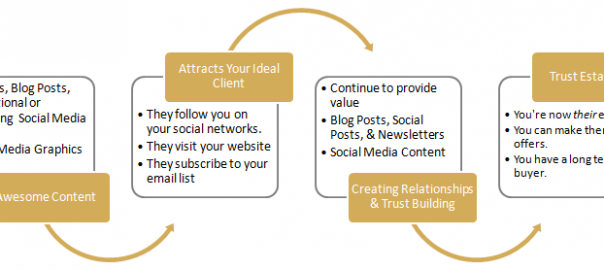In this fast moving world, it’s a major accomplishment to launch a small business. There can be years of preparation and when your business is finally open to the public, it’s a huge feat. Yet keeping the momentum going and growing your business takes another level of focus and strategy. For small businesses, your funds are precious, so making the most of your free or limited-cost options is essential. Enter social media. Social media of all kinds should be your best friend. There are platforms for all industries and it is free marketing and PR for your business. You can become a social media ninja and watch your business boom from a few tactical moves.
Social media has gained legitimacy as a business development resource over the past few years, as indicated by Pinterest, Instagram, and others launching business specific services like ads and analytics. However, in order to be successful, you don’t necessarily need to engage in these paid promotions. Think of your social media presence as a way to converse with potential customers in a personal way. Social media is a terrific platform for real-time dialogue. Traditional advertising campaigns cannot afford that level of customization and as trends are showing, people want to feel known by businesses. This structure is a win-win for any small business. You just have to know the components of a strong social media structure.
Are you ready to take the plunge with social media for your business? If so, keep reading for our step-by-step social media for business guide.
Carefully select your social media platforms
Find out where your target audience spends their time. Search your competitors’ social profiles and see how engaged their audiences are by platform. You want to optimize your time on social, so choosing the platforms where people are most active is a logical move. Consider, too, the tone and types of content posted on these media platforms. Knowing that your audience responds better to GIFs than infographics will inform your posting strategy and set you up for better engagement.
Beyond your audience, matching your social media to your brand identity is another major consideration in choosing your platforms. When reviewing your social options, consider the following social breakdown, courtesy of Entrepreneur:
- Facebook is the best platform for promoting brand awareness, as nearly three quarters of American adults use the site. Facebook is a great platform for promoting virtually any brand, due to its very heterogeneous user base.
- Instagram is a great option for brands that rely heavily on images, such as clothing companies and retailers.
- Google+ can be a great platform to reach men in the technology industry, as two-thirds of the network’s users are men, most of whom work in engineering or other technical professions.
- Pinterest is an excellent social network to reach women, especially for brands selling jewelry or clothing.
- If you’re running a B2B company, LinkedIn is a stronger choice for promoting business-related content and connecting with other corporate influencers.
Create consistent profiles
Now that you know where you’re going to build presences, having consistent profiles across all platforms is vital. Your profiles, and their consistency, reflect your brand identity through imagery and tone of voice. When your social presences are in sync, it portrays a reputable, trustworthy entity to the public. It’s an easy way to validate your authenticity with very little effort.
For a cohesive business social presence, keep the following tips in mind when establishing your profiles:
- Have the same username across all platforms. If your preferred username is taken, which happens often, choose something that is as close to your ideal name as possible. Your username becomes a brand association and you want it to trigger easy recall from consumers.
- Pick the same image for your profile pictures.
- Your fonts, colors, and imagery should all be the same.
- Decide on your brand voice and don’t deviate from it. Your tone is part of your brand identity and remaining consistent with it is needed to grow your followers.
- Include a bio and link to your business website.
Publish and share relevant content
This is where social gets fun! Publishing original content and sharing others’ is what makes you visible to your target audience. You may have a blog or unique tidbits of information you want to share with the world; use these for your social posts. Pushing your own thoughts and information establishes your business as reputable in the marketplace. Posting is a way to promote your business and form trust without being egregious.
Be mindful of the 80/20 rule when setting up your social posting calendar. Only 20% of your posts should promote your business, while the remaining 80% should be sharing other content that truly engages your audience. Think about your favorite social accounts. What do they have in common? They share useful and relevant information and you don’t feel attacked by ads and promos when you scroll through their timelines. This is also a strategy for building goodwill among other businesses and giving them some social love. Businesses and people are likely to comment, share, or like your content if you’ve done the same to theirs. Unsure of how much is too much? Consult Herox’s Social Media Checklist to guide your social activity.

Adopting the 80/20 rule will garner the followers, involvement, and customers you want for your growing business.
Marketing Solved created this incredible chart depicting how trust is established through a business’s social media.
It reinforces the importance of being credible on social and how building relationships drives loyal customers. In order to build trust and move your followers through the social flow, include a mixture of the following elements in your content:
- Education – through tips, step-by-step guides, trending news, etc.
- Adds value – provides information they can put to use
- Causes them to ponder – highlight success stories or pose a thought provoking questions
- Encourages them – makes people feel good and inspired to take action
- Reason to return – give them incentives for following you, such as special offers or giveaways
And while we’re on the topic of consistency and trust building, instituting a reliable posting schedule is necessary when building a business through social media. If you have a blog, post on specific days and times, if possible, so your readers can anticipate when new content will be available. If you’re posting to social media only, create a schedule so followers come to expect a certain number of posts per day. Your hashtags should follow suit by consistently using the same hashtags across your platforms. Hashtags cast a wider net for your content and expose it to non-followers, which lead to audience growth and increased brand awareness. This dependability translates to brand loyalty over time and is paramount to growing your business.
Much like anything else with social media, trial and error is required for posting until you find the sweet spot for your audience. Mix up your types of content, include graphics, GIFs, inspirational quotes, and see what generates the most engagement.
Actively listen and engage your community
Active listening has become a buzzword of sorts for social media in 2016, but it’s really quite needed given the space. Engaging with followers, responding to comments, and taking to heart what people are saying about your business, its products, and your customer service encompasses active listening. Being a small business allows you to closely monitor these conversations and respond in a customer-centric way, which reinforces your company values and culture.
Aside from responding to reviews and comments, having actual dialogues with your closest followers instills a sense of community and access that many consumers seek. AJ Nicholas, senior director of public relations and marketing for Rent the Runway frames how brands should aim to connect with their social consumers:
“We interact with our followers individually to breed a close community of brand ‘insiders’ who feel comfortable regularly engaging with us.”
This kind of communication grows your customer loyalty while provides invaluable market insights straight from the consumers themselves.
Triple check your website is up and running
All of your hard work with social is useless unless you have a professional website for followers to access once they’re invested in your social presence. As mentioned above, your social profiles should include a link to your website in their bio section. This means your site is primed to get much more traffic than normal.
Having a professional-looking website provides additional level of credibility to your audience. It allows viewers to learn more about your products and services as well as showcases your expertise. Ensure you make the best impression possible on your visitors by reviewing your website before launching your social profiles. Ask yourself:
- Are all internal systems operating correctly?
- Are there any error messages?
- Is your content free of grammar and spelling errors?
- Does the design evoke a feeling of professionalism?
Consider these questions and make any changes before you go full-throttle into social media mode.
Feeling like social media is another job of its own? Don’t fret and set up a social media editorial calendar. With this tool, you can streamline your efforts and exponentially decrease the amount of time you spend on social per week. Building your business through social media is feasible for small businesses and we hope this guide inspires you to initiate your social engagement today.
Business & Finance Articles on Business 2 Community
(55)
Report Post








